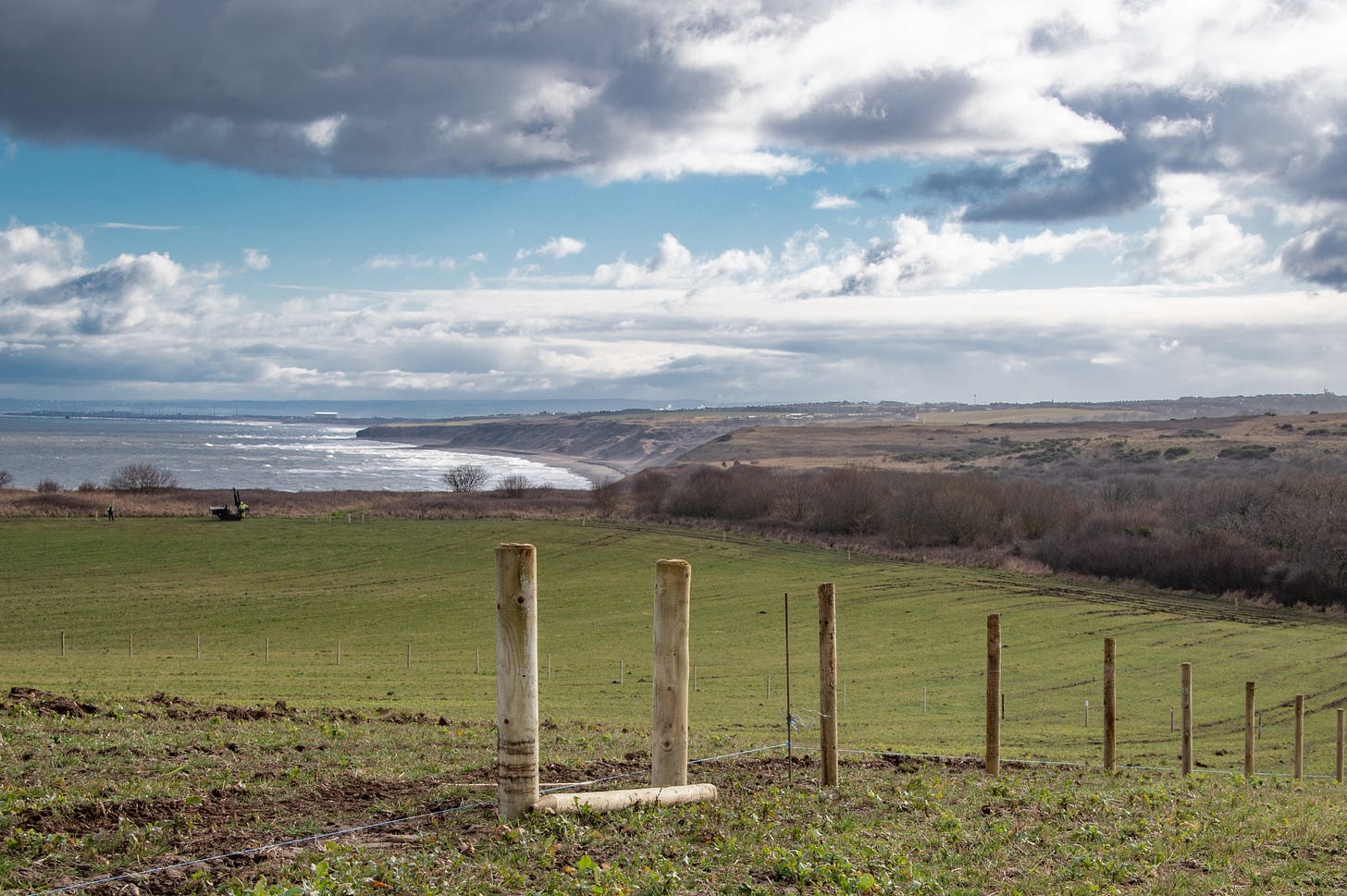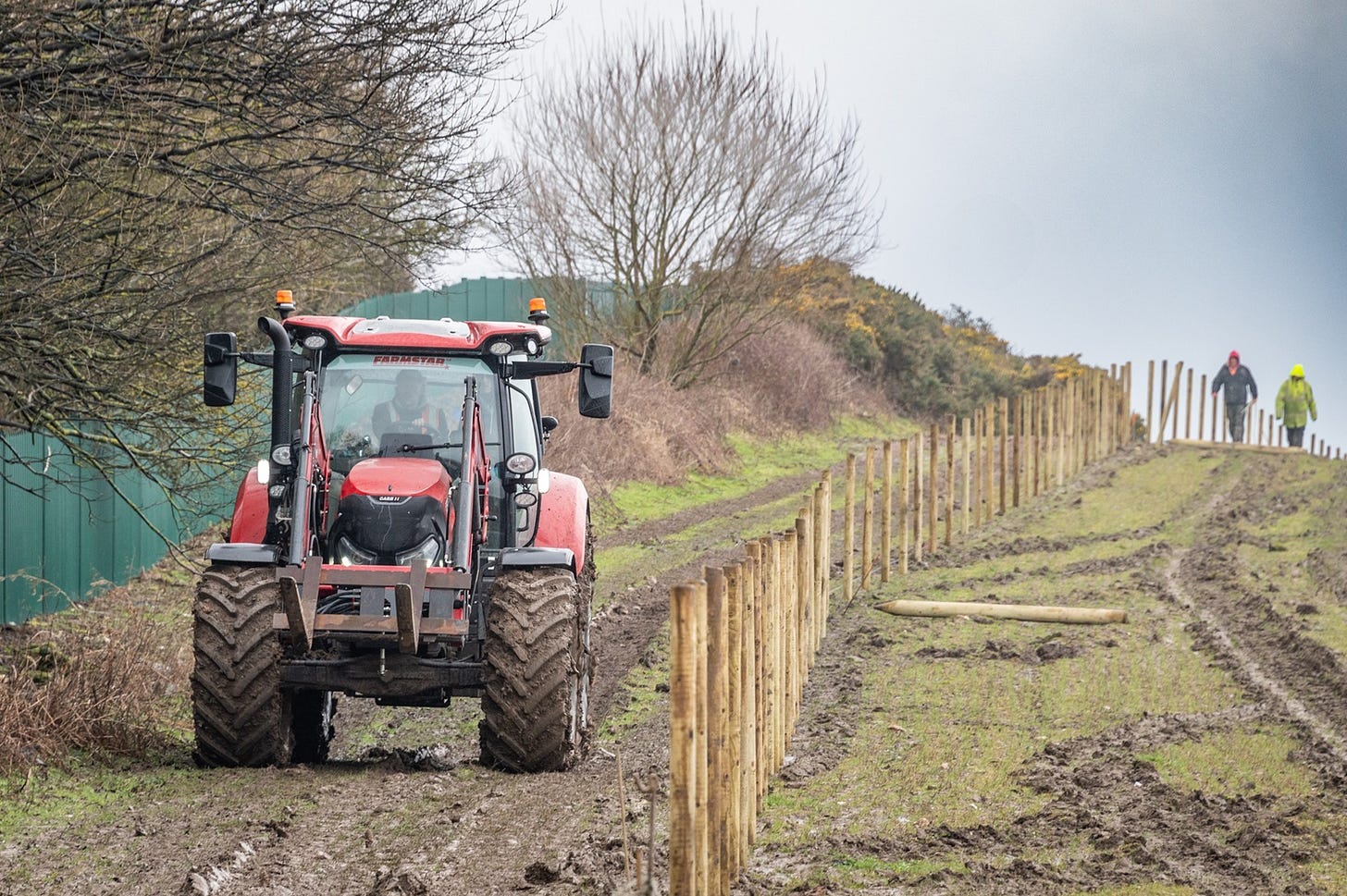The power of nature for recovery
New coastal nature reserve named in memory of young woman. Tony Henderson reports ahead of a week of tree-planting on the site, including saplings from Sycamore Gap
A new nature reserve created by the National Trust has been named in memory of a young woman who lost her life to trauma-based addiction.
The coastal reserve at Horden in County Durham has been designated as Tina’s Haven, after Tina Robson, who died aged 35 in 2020.
In 2023 the National Trust purchased a 34 hectare (84 acre) field at Warren House on the Durham coast with grant funding from the North East Community Forest Trees for Climate fund.
The former farmland is being restored to a natural state as a reserve with the aim of enhancing recovery for both people and nature.
Tina’s mother, Dr Sue Robson, founded and collaboratively developed a groundbreaking arts and nature-based programme, also named Tina’s Haven, in East Durham, designed to nurture self-empowerment and support women’s recovery from addiction and trauma.
She is now working closely with the National Trust and local organisations including Addictions Northeast, The Barn at Easington, Women in Empowerment and Recovery (WiRE) Project, No More Nowt, Durham County Council’s Horden Together, the Coalfields Regeneration Trust, Free Women’s Community, Recovering Justice Women’s Group, Steps into Recovery and Rainbow Promise, to ensure the Tina’s Haven site embodies strength in community.
The project provides a place for people to connect with each other, spend time outdoors and work together to create the nature reserve.
Monday March 31 – chosen to mark what would have been Tina’s 40th birthday - begins a week of tree-planting at Tina’s Haven. Community groups, partner organisations and schools will be invited to plant saplings along with their messages of hope, written on heart-shaped biodegradable paper.
A total of 21,575 trees will be planted at the reserve, including one of 49 saplings grown from seed from the illegally felled Sycamore Gap tree at Hadrian’s Wall and gifted to communities across the UK.
Dr Sue Robson said: “The planting of the Sycamore Gap sapling on the land later this year will symbolise that even after the worst adversity and tragedy, there can be recovery, healing, new beginnings and hope can grow in abundance.
“Through the Tina’s Haven project, women are achieving self-empowerment and well-being from being immersed in nature, effectively connecting their recovery to that of the land.
“Collectively working towards the creation of Tina’s Haven widens and extends these connections, spreading a message of hope across East Durham communities and beyond.”
Backed by grants from the North East Community Forest, the Species Survival Fund, a partnership between Defra and the National Lottery Heritage Fund, and additional funding from HSBC UK, the nature reserve will feature a mix of woodland, wood pasture, grassland, hedgerows, ponds and wetlands.
It will form part of a wider programme of nature and habitat restoration work happening locally. Nearby, a project at White Lea Farm in Easington Colliery began last year with the creation of 8.2km of hedgerows, woodland and wood pasture that now connects Hawthorn Dene and Foxhole Dene.
Horden councillor June Clark said: “I belong to probably the third generation living a stone’s throw from these fields on Durhams Heritage Coast, who never set foot there in our youth for fear of our mother’s wrath at venturing too close to the filth that was the beach.
“Today and it couldn’t be more different. Our coast is finding its audiences at last. It’s all thanks to moving, sympathetically created projects which celebrate, embrace and allow new beginnings from past pain and loss.
“Tina’s Haven complements previous partner projects such as the Minewater Treatment Bird Sanctuary and artistic signage along the coastal pathway leading to this magnificent sanctuary.”
Eric Wilton, general manager for the National Trust’s Derwent, Wear and Coast Portfolio said: “Purchasing the field at Warren House brings amazing opportunities for habitat improvement and nature recovery on the coast.
“It sits between National Trust land at White Lea Farm to the north and Cotsford Fields to the south, meaning we now care for a continuous six mile stretch between Seaham and Horden. It’s like another piece of a jigsaw, and managing land on a larger, joined-up scale brings many benefits.
“The project is a brilliant example of partnership working. As well as nature restoration, the funding and support received means we can improve public access to this part of the coast too.
“A circular path around the field will be created, joining up with the King Charles III England Coast Path along the cliff edge. Connecting people and nature is a hugely important aim of the project.”
Lloyd Jones, forest manager, North East Community Forest said: “We are delighted to be supporting this project with our Trees for Climate grant, a woodland creation programme, managed by the North East Community Forest and funded by the Department for the Environment, Food and Rural Affairs through the Nature for Climate Fund.
“This is a true partnership and community project which will contribute to enhanced biodiversity and visual amenity, whilst mitigating climate change, and installing a strong sense of community stewardship.”
Michael Burn, species survival fund (SSF) manager for the Heritage Coast Partnership said: “The site is a key part of the Coastal Grasslands Reconnected Project which plans to create and restore wildflower-rich magnesian limestone grasslands along the Durham Heritage Coast.
“Our rare limestone coast supports unique plants, so it is vital we protect these habitats and prepare roll-back habitats for plants found on the cliff tops which are susceptible to erosion events. The creation of mosaic habitats will help improve species recovery and biodiversity resilience. Through activities such as tree planting, we can encourage stewardship and connect people with local wildlife.”




